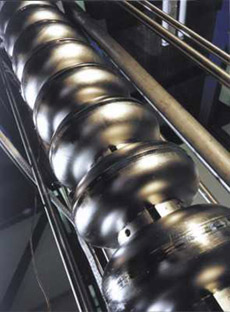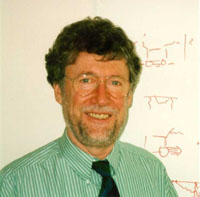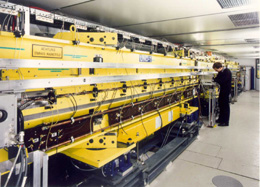 |
|
DESY Gets OK on TESLA X-Ray Laser by Petra Folkerts
Hamburg, Germany - Deutsches Elektronen-Synchrotron (DESY) has been given the go-ahead on the X-ray laser for the TeV-Energy Superconducting Linear Accelerator project,but the German government will not make a proposal at this time to host the TESLA collider. The two TESLA projects,the X-ray laser and the linear collider,were assessed by the German Science Council with excellent results in November, 2002 and the Federal Minister of Education and Research,Edelgard Bulmahn,announced the government ’s two-part decision on Feb.5: 1)The X-ray laser will be built as a European project,and Germany will bear half the costs because of the advantage of location; 2)Before making a decision on a location of the TESLA linear collider,the German government will wait for developments on the international level within the high-energy physics community.The current research work for the project will be continued by DESY within an international framework, to enable German participation in a future global project. “DESY welcomes the rapid and trend-setting statement of the Federal Government on the large-scale research facilities and sees it as a tremendous chance for TESLA,”said the Chairman of the DESY Directorate, Professor Albrecht Wagner.“It strengthens the Helmholtz Association [of National Research Centers ] playing the role of an operating agency for large-scale research facilities.The possibility to realize the TESLA X-ray laser as a European project at DESY opens up outstanding research possibilities for Germany.For the linear collider for particle physics which is being planned on a longer-term basis,DESY is able to continue the international research work.” On the basis of Buhlman’s decision,preparations for TESLA will now enter a new phase:Concerning the X-ray laser project,the first step will be to work out the financial,technical and organizational framework with the interested European partners.
The decision of the Federal Ministry of Education and Research (BMBF)to await the course of the international developments before recommending a site for the TESLA linear collider,while renewing its support of the research and development work for such a collider,allows DESY and its partners to continue with the political and technological coordination and decision process which is currently in progress at an international level.The declared goal is to operate a linear collider as an international research facility for particle physics in the next decade either in America,Asia or Europe, possibly at DESY. TESLA is a particle accelerator operating at extremely high energies (Tera electron volts).The unique feature of the TESLA concept is the use of superconducting acceleration structures which have to be cooled down to minus 271 degrees Celsius.DESY initiated research and development 10 years ago for TESLA,and the project is now being carried out as joint effort by 46 institutions from 12 countries at a test facility in Hamburg.
Both projects employ superconducting technology. In the 33-kilometer-long TESLA linear collider,it will provide the means of producing particle collisions at the highest energies,allowing physicists to take a closer,more detailed look than ever before at the smallest dimensions and the origins of matter and the universe.The superconducting electron accelerator of the TESLA X-ray laser will serve as a source of intense and extremely short X-ray flashes with laser properties that will open up completely new research opportunities for the natural sciences. The wavelength of the laser light is so small that even atomic details become discernible;the wavelength can be varied in the range of six to one-tenth of a nanometer.The highly intense,ultra- short X-ray flashes enable researchers to record what are essentially films from the microscopic world —monitoring,for example,how a chemical reaction progresses from atom for atom —to study the processes occurring inside materials or to unveil the structure of biological molecules.
Witherell:DESY announcement furthers global outlook
ON THE WEB: German Scientific Council www.wissenschaftsrat.de Press Release (in German) of the Federal Ministry of Education and Research (BMBF) www.bmbf.de Deutsches Elektronen- Synchrotron (DESY) www.desy.de/html/home/index.html TESLA Project tesla.desy.de
|


